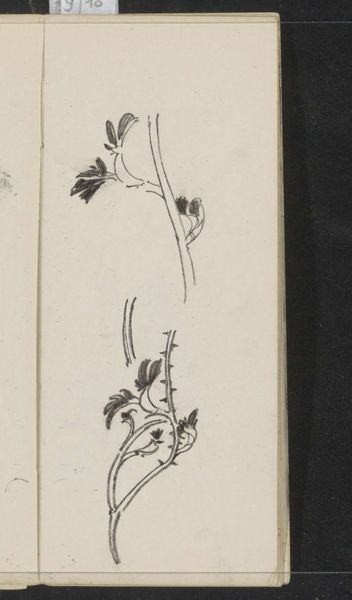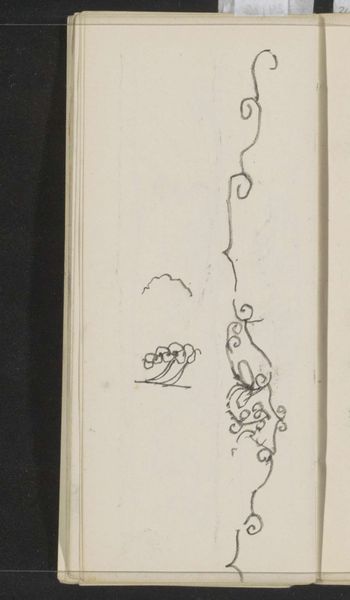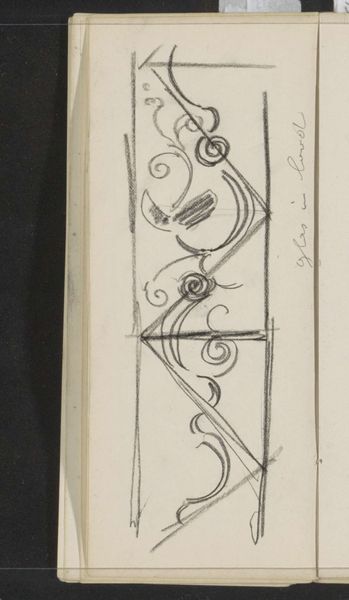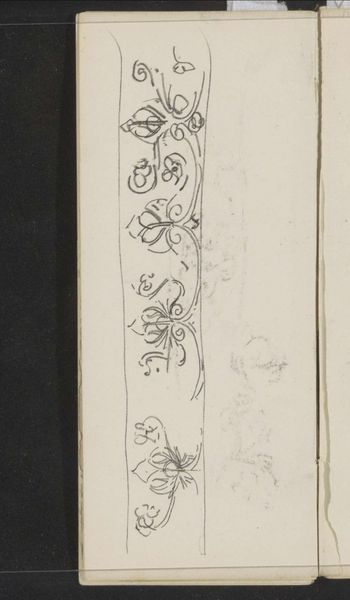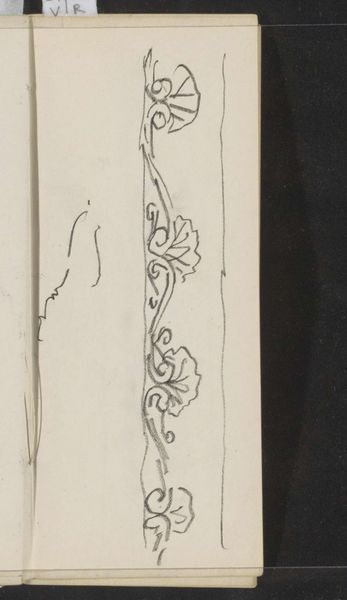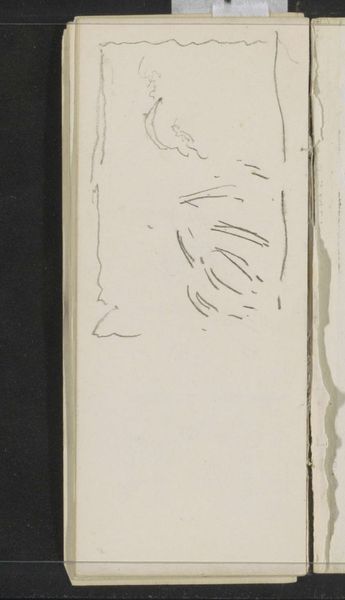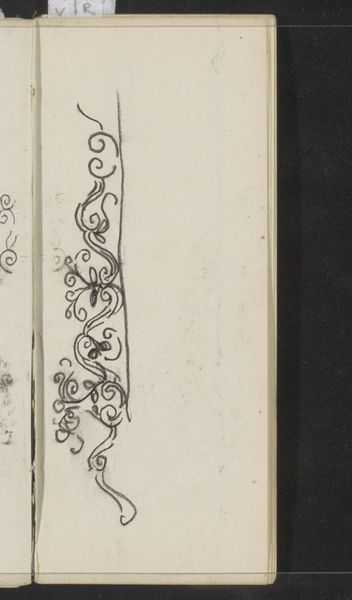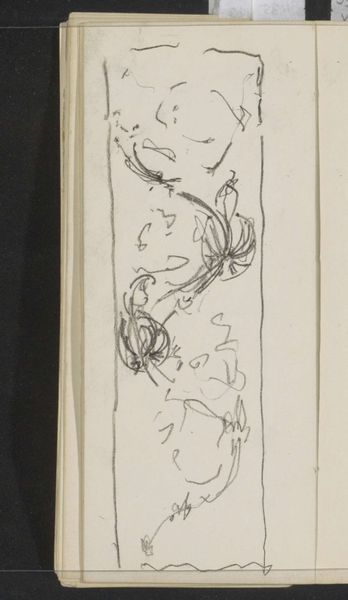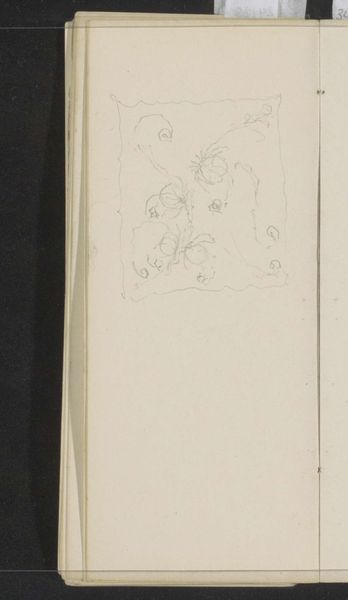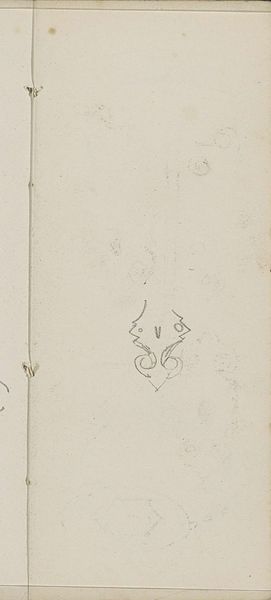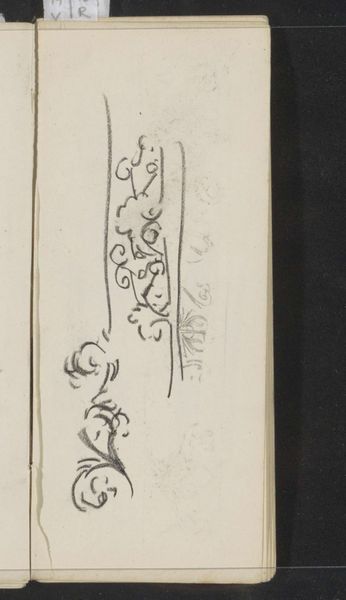
drawing, paper, ink
#
drawing
#
organic
#
art-nouveau
#
hand-lettering
#
sketch book
#
hand drawn type
#
hand lettering
#
paper
#
personal sketchbook
#
ink
#
hand-drawn typeface
#
pen-ink sketch
#
line
#
pen work
#
sketchbook drawing
#
sketchbook art
Copyright: Rijks Museum: Open Domain
Editor: This is "Rozen," a drawing by Gerrit Willem Dijsselhof, made sometime between 1876 and 1924. It's ink on paper, and it looks like a page from a sketchbook. I’m struck by the contrast between the delicate rose outlines and the sharp, thorny stems. What do you see in this piece, considering its formal qualities? Curator: I see a carefully constructed arrangement of line and form, a tension between organic growth and stylized representation. Consider the curvature of the stems—how they echo the spiral of the rose petals. The artist has simplified the natural world into a series of elegant gestures. Editor: So you're saying the beauty comes from how it's been simplified? That the artist isn't trying to mimic nature exactly? Curator: Precisely. Note the almost calligraphic quality of the lines. The varying thickness and pressure create a dynamic visual rhythm. The artist employs contrast—the dense hatching in the leaves juxtaposed with the open contour of the roses—to create depth and interest within a limited palette. How do you interpret that relationship? Editor: I guess the contrast makes you focus on the different parts, seeing them almost as separate elements that make up the whole. It makes you appreciate how he put it together, more than just seeing a rose. Curator: Exactly. It’s the artist's conscious manipulation of form and line that elevates the sketch beyond mere botanical illustration. What strikes me most is the intentional use of the page itself—the negative space becomes an active element in the composition, balancing the density of the rose motif. Editor: That makes a lot of sense. I hadn’t thought about the empty space being part of the drawing itself. Thanks, I'll look at other drawings differently now, considering the space around the main subject. Curator: My pleasure. Paying attention to how the artist uses elements and space allows us a deeper understanding of art and representation.
Comments
No comments
Be the first to comment and join the conversation on the ultimate creative platform.

